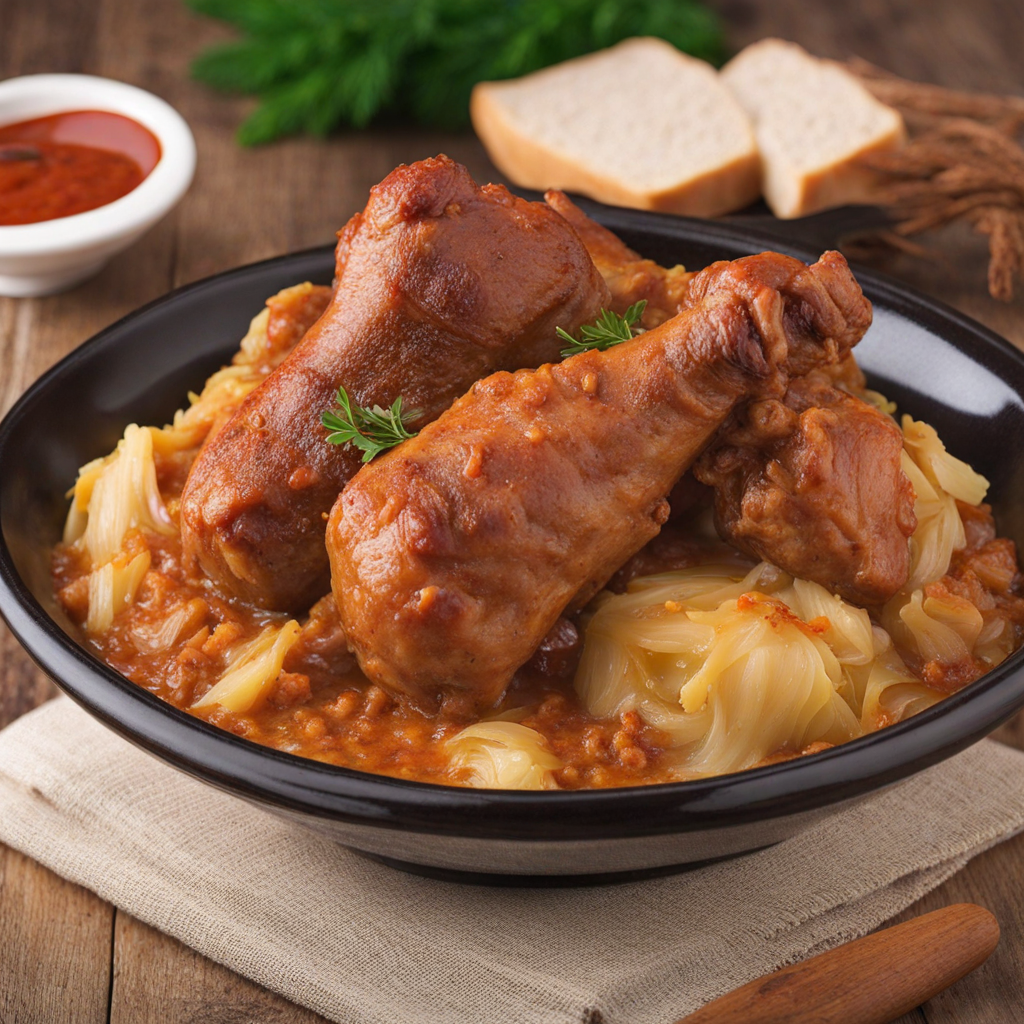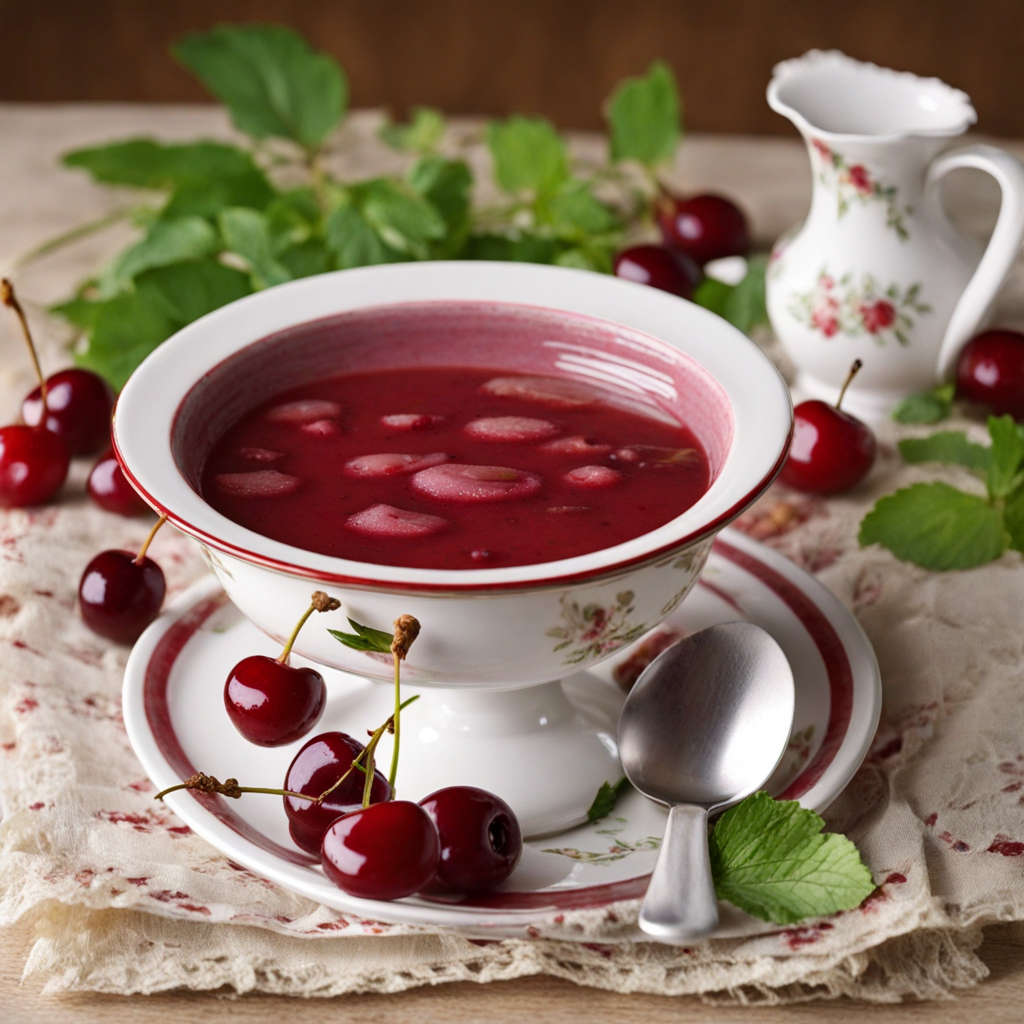Túrós Csusza
Túrós Csusza is a delightful Hungarian dish that showcases the country's rich culinary heritage. At its core, this dish features soft, egg noodles that are lovingly tossed with a generous amount of fresh, creamy cottage cheese, known as túró. The noodles are typically cooked until al dente, then combined with the túró to create a luscious, comforting texture that is both hearty and satisfying. The simplicity of the ingredients allows the flavors to shine, making it an ideal choice for those looking to explore authentic Hungarian cuisine. One of the standout characteristics of Túrós Csusza is its versatility. While the classic version is often enjoyed as it is, it can be elevated with a drizzle of sour cream for added creaminess, or a sprinkle of crispy bacon or smoked ham for a savory crunch. These additions enhance the dish without overshadowing the subtle tang of the cottage cheese, balancing the flavors beautifully. For those who appreciate a hint of sweetness, some variations incorporate a touch of sugar, making it a delightful dish that can be enjoyed at any time of day, whether as a main course or a comforting side. The dish is often served warm, making it a perfect comfort food for chilly days. The combination of textures—from the soft noodles to the creamy cheese—creates a satisfying mouthfeel that is both rich and indulgent. As you take your first bite of Túrós Csusza, the warmth envelops you, and the unique flavors transport you to the heart of Hungary, inviting you to savor every morsel. This traditional dish is not just a meal; it’s an experience that reflects the warmth and hospitality of Hungarian culture.
How It Became This Dish
Túrós Csusza: A Culinary Journey Through Hungary's Rich Heritage Túrós Csusza, a beloved dish from Hungary, embodies the essence of Hungarian comfort food. At its core, Túrós Csusza is a simple yet satisfying dish made from egg noodles, fresh curd cheese (túró), sour cream, and often topped with crispy bacon. This dish is not just a meal; it represents a tapestry of Hungarian history, culture, and culinary practices that have evolved over centuries. Origins of Túrós Csusza The roots of Túrós Csusza can be traced back to the agricultural communities of Hungary, where the abundance of dairy products and grains played a vital role in daily sustenance. The word "csusza" derives from the Hungarian verb "csúszni," which means to slide or slip. This reflects the dish’s characteristic of being a slippery, creamy noodle dish that slides smoothly onto the plate. The use of túró, a type of fresh curd cheese, highlights the importance of dairy in the Hungarian diet. Historically, Hungary has been a melting pot of different cultures due to its geographical location at the crossroads of Europe. The influence of Slovak, German, and even Turkish cuisines can be seen in various Hungarian dishes, Túrós Csusza included. While egg noodles are a staple in many European cuisines, the specific combination of ingredients in Túrós Csusza offers a unique twist that showcases Hungary's culinary identity. Cultural Significance In Hungary, Túrós Csusza is more than just food; it is a symbol of home, family gatherings, and community. Traditionally served as a hearty meal, it is often found on the tables of Hungarian families during festive occasions or Sunday dinners. The dish is particularly popular among children, who are drawn to its creamy texture and comforting flavors. During the harvest season, when dairy farms were plentiful, Túrós Csusza became a staple for farmers and laborers seeking sustenance after long days of work. Its affordability and ease of preparation made it an ideal choice for families, allowing them to make the most of available ingredients. Over time, it has earned a place in the hearts of many and is now seen as a quintessential representation of Hungarian home cooking. Development Over Time The evolution of Túrós Csusza reflects broader changes in Hungarian society and cuisine. In the early 20th century, as urbanization began to take hold, traditional dishes like Túrós Csusza adapted to the changing lifestyles of the Hungarian people. City dwellers sought quick and convenient meals, leading to the rise of eateries and restaurants that began offering traditional dishes with modern twists. The post-World War II era saw a resurgence of interest in traditional Hungarian cuisine as a way to preserve cultural identity. During this time, Túrós Csusza became more widely recognized and appreciated, not just as a household dish but also as a restaurant specialty. Chefs began experimenting with various toppings and ingredients, introducing mushrooms, onions, and different varieties of cheese, while still respecting the dish's original essence. In contemporary Hungary, Túrós Csusza has continued to thrive. It appears on the menus of modern bistros and restaurants, where chefs honor tradition while incorporating innovative elements. Some establishments have even started to present Túrós Csusza in more gourmet ways, pairing it with artisanal cheeses or incorporating local herbs and spices, showcasing Hungary's rich culinary heritage while appealing to a younger, more diverse audience. Túrós Csusza in Modern Context The resurgence of interest in traditional Hungarian dishes like Túrós Csusza aligns with a broader global trend of valuing authenticity and local ingredients. Today, many Hungarians take pride in preparing Túrós Csusza at home, often passing down family recipes through generations. This practice strengthens familial bonds and keeps the culinary traditions alive. The dish's adaptability also suits modern dietary preferences. While the traditional version is hearty and rich, there are now variations that cater to vegetarian and lactose-free diets by substituting ingredients without compromising the dish's comforting nature. This evolution speaks to the resilience of traditional recipes, allowing them to adapt while still maintaining their cultural significance. Conclusion Túrós Csusza is more than just a dish; it is a narrative of Hungary's agricultural past, cultural identity, and culinary evolution. From its humble origins in rural kitchens to its prominence in modern gastronomy, Túrós Csusza continues to evoke nostalgia and warmth in the hearts of those who savor it. As it evolves and adapts to contemporary tastes, it remains a testament to the enduring nature of traditional foods, bridging the gap between generations and cultures. In Hungary, every plate of Túrós Csusza tells a story—a story of community, comfort, and a rich culinary heritage that continues to thrive in the modern world. Whether enjoyed at a family gathering, in a cozy restaurant, or prepared at home, Túrós Csusza is a dish that invites everyone to share in the warmth of Hungarian hospitality and tradition, ensuring its place in the hearts and homes of many for years to come.
You may like
Discover local flavors from Hungary







